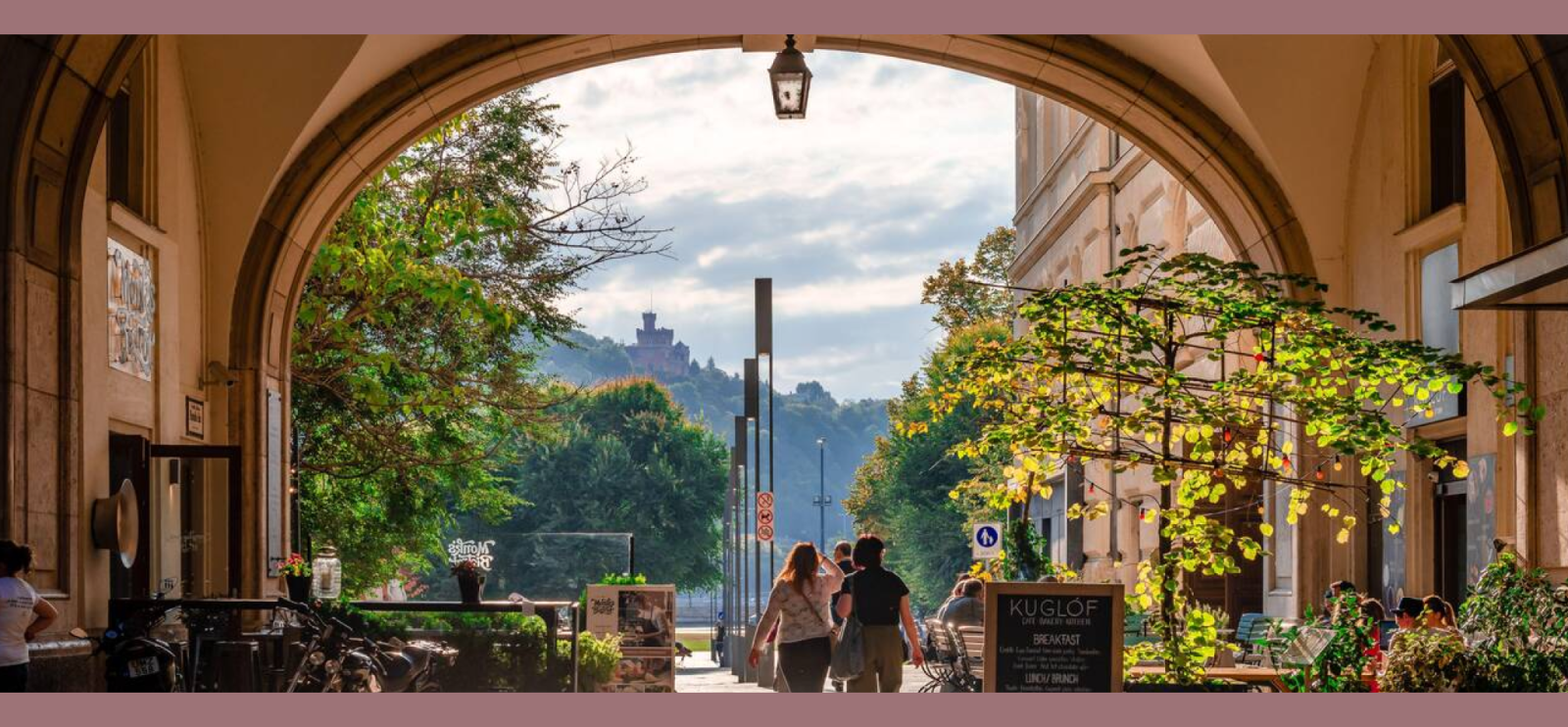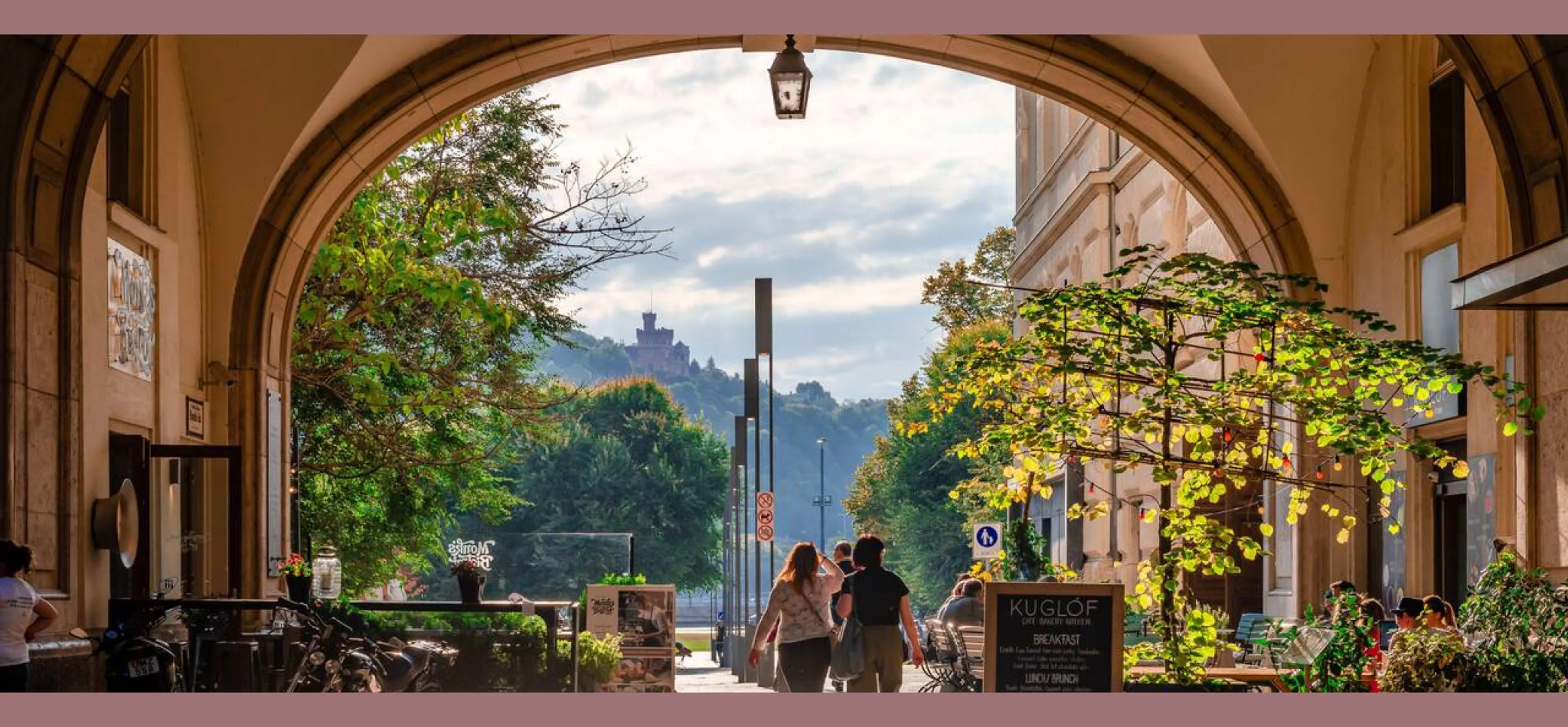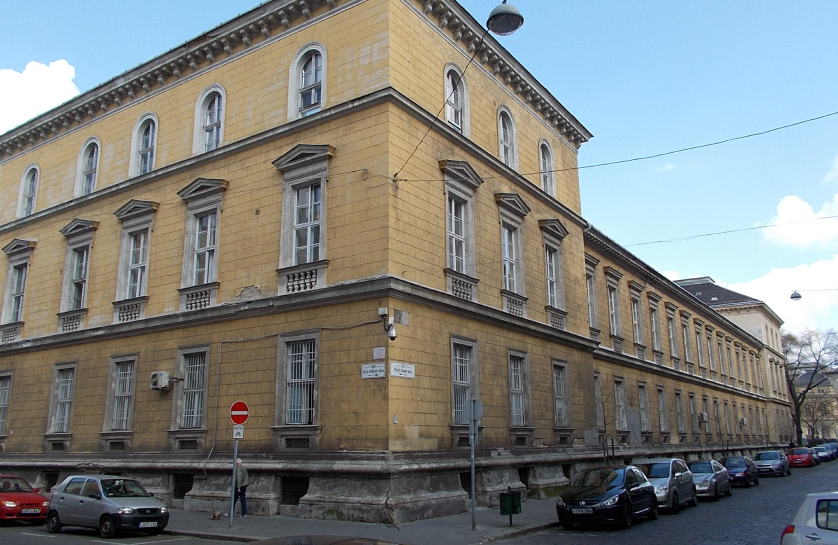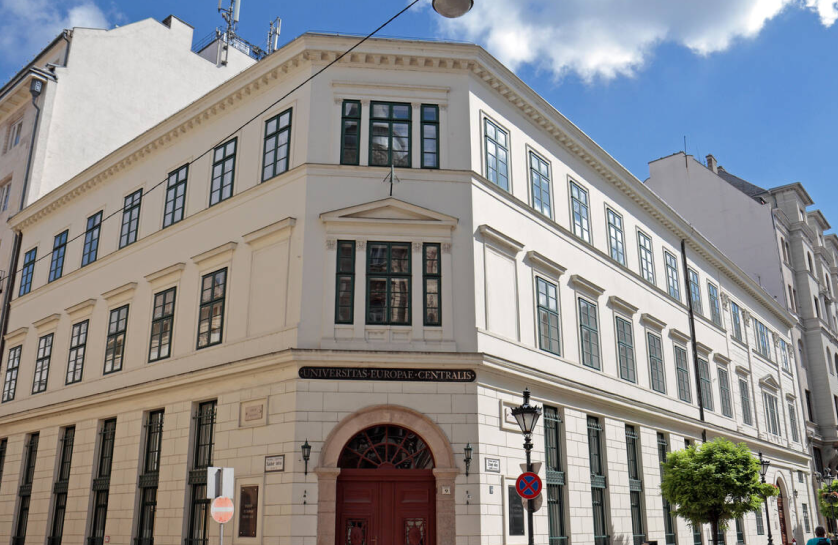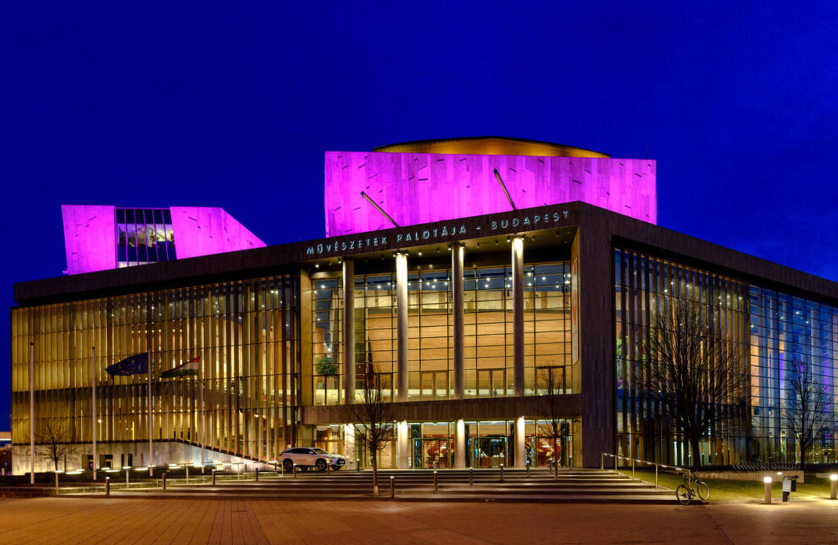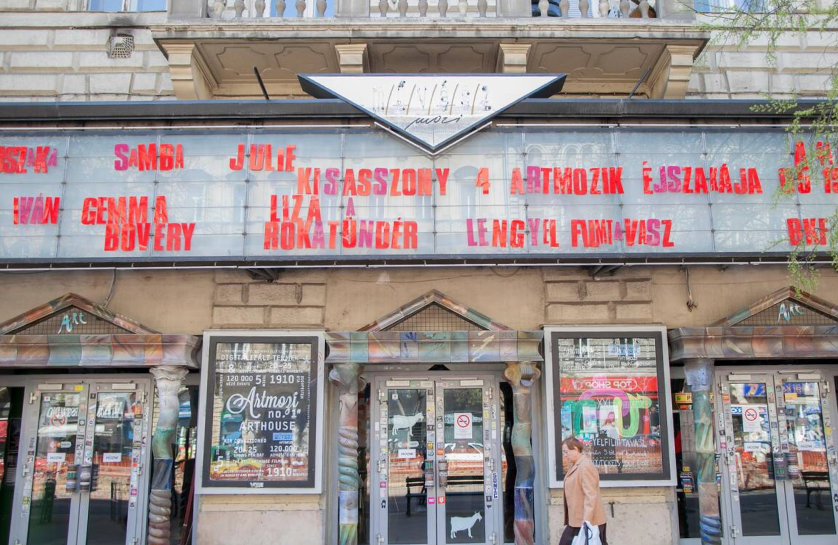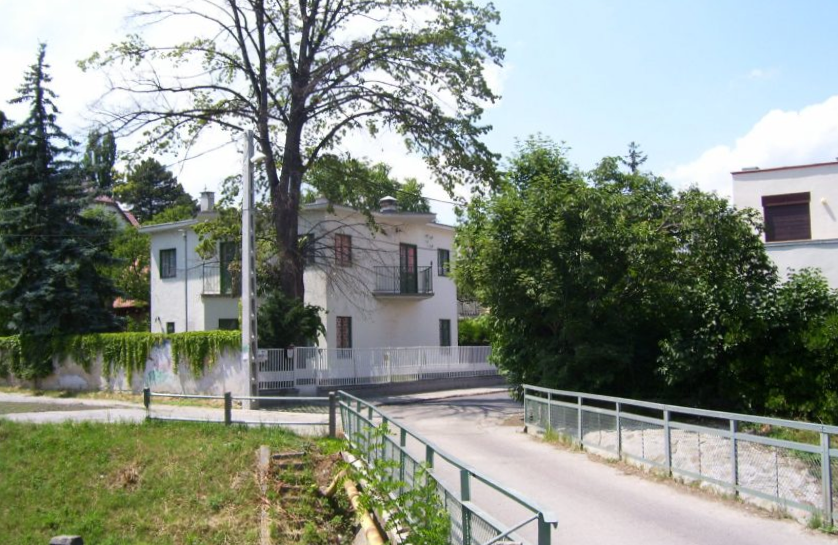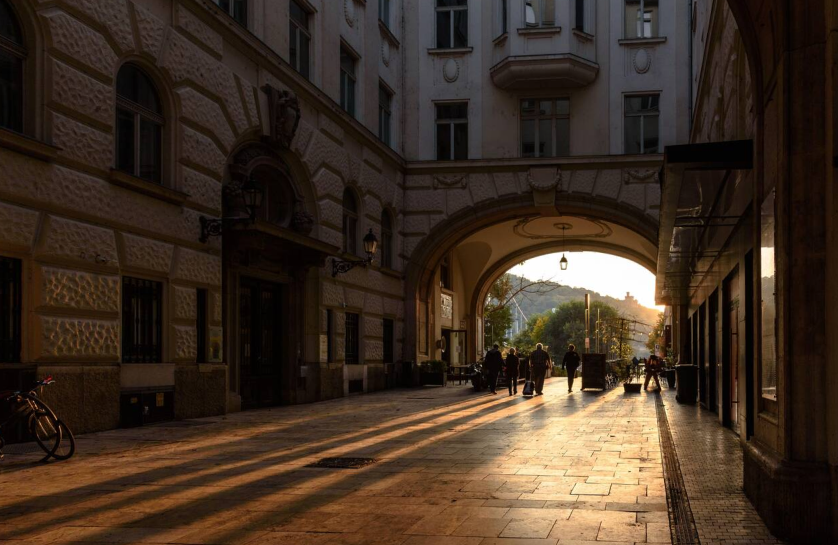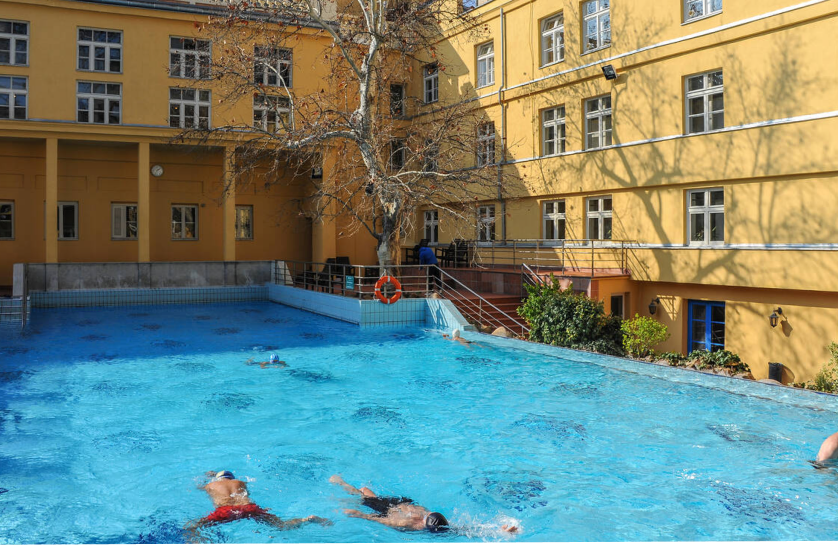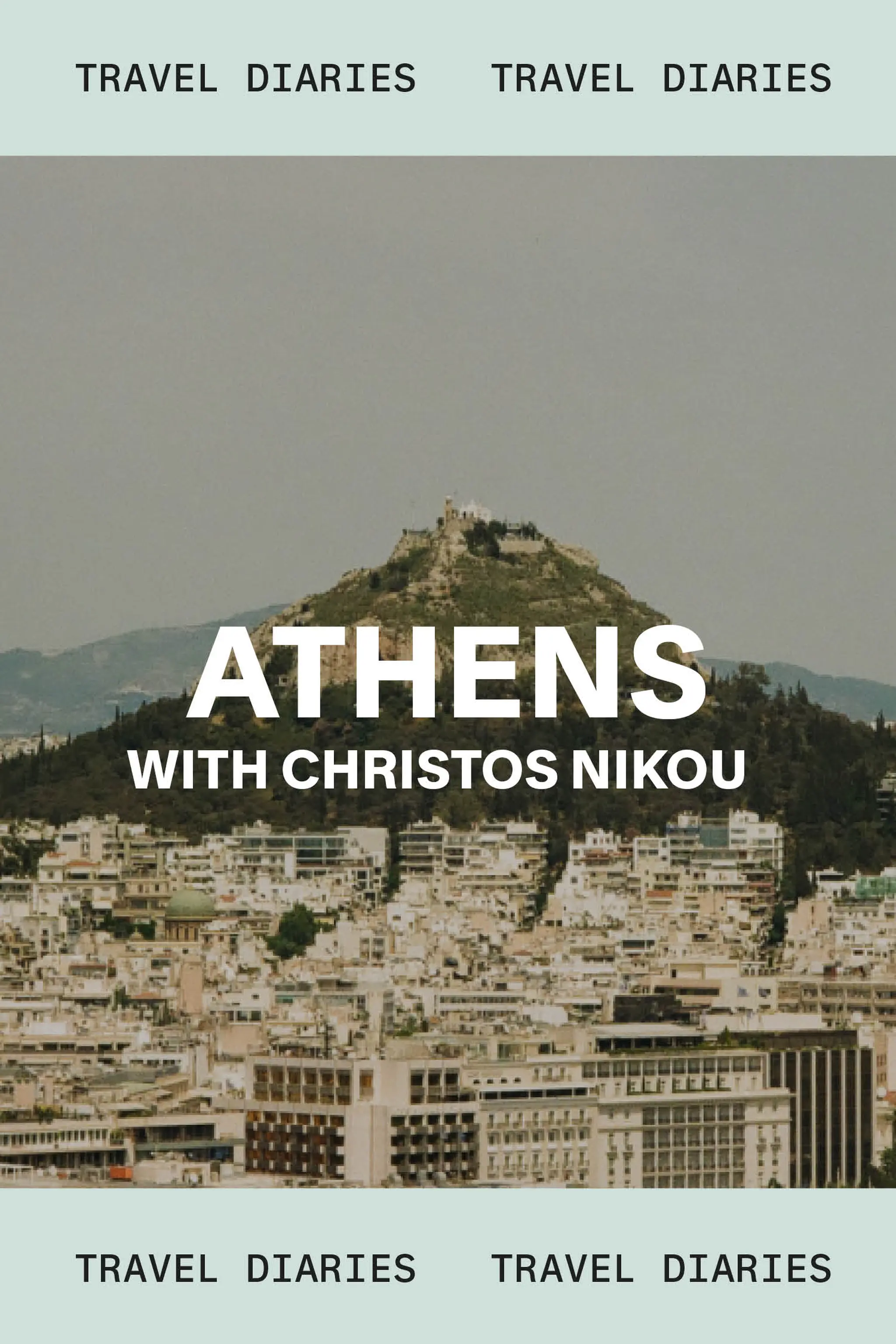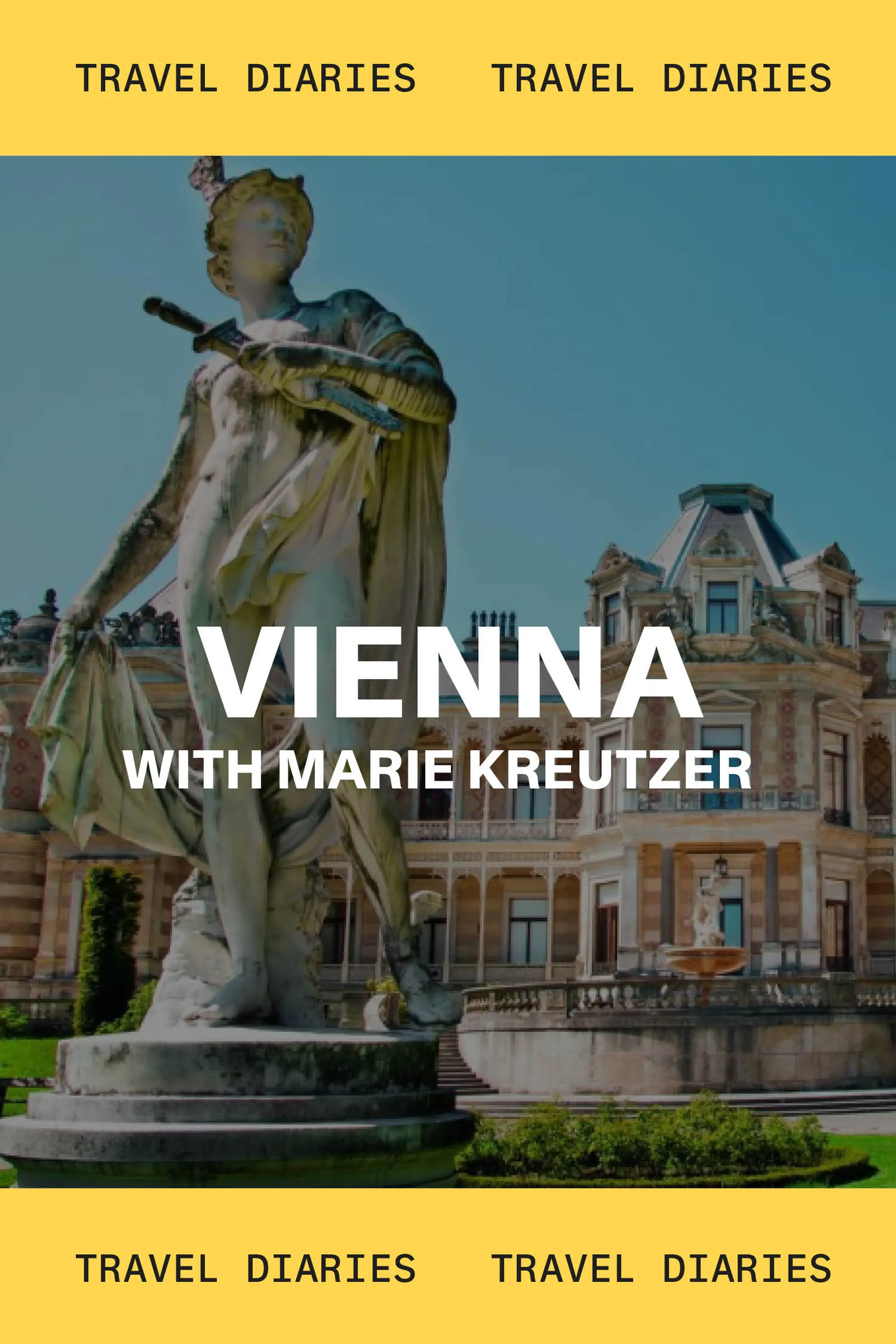Travel Diaries: Budapest
With Lili Horvát
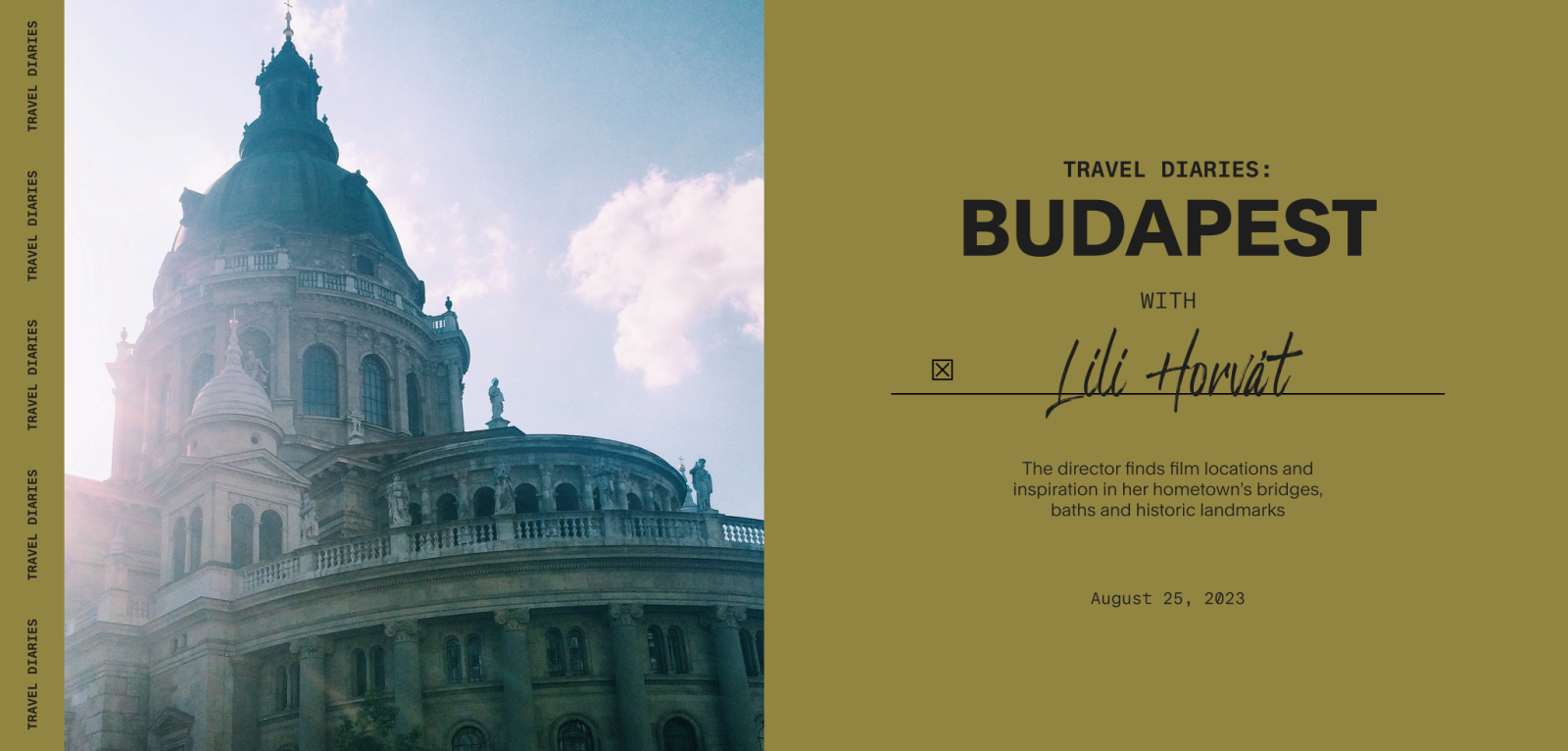
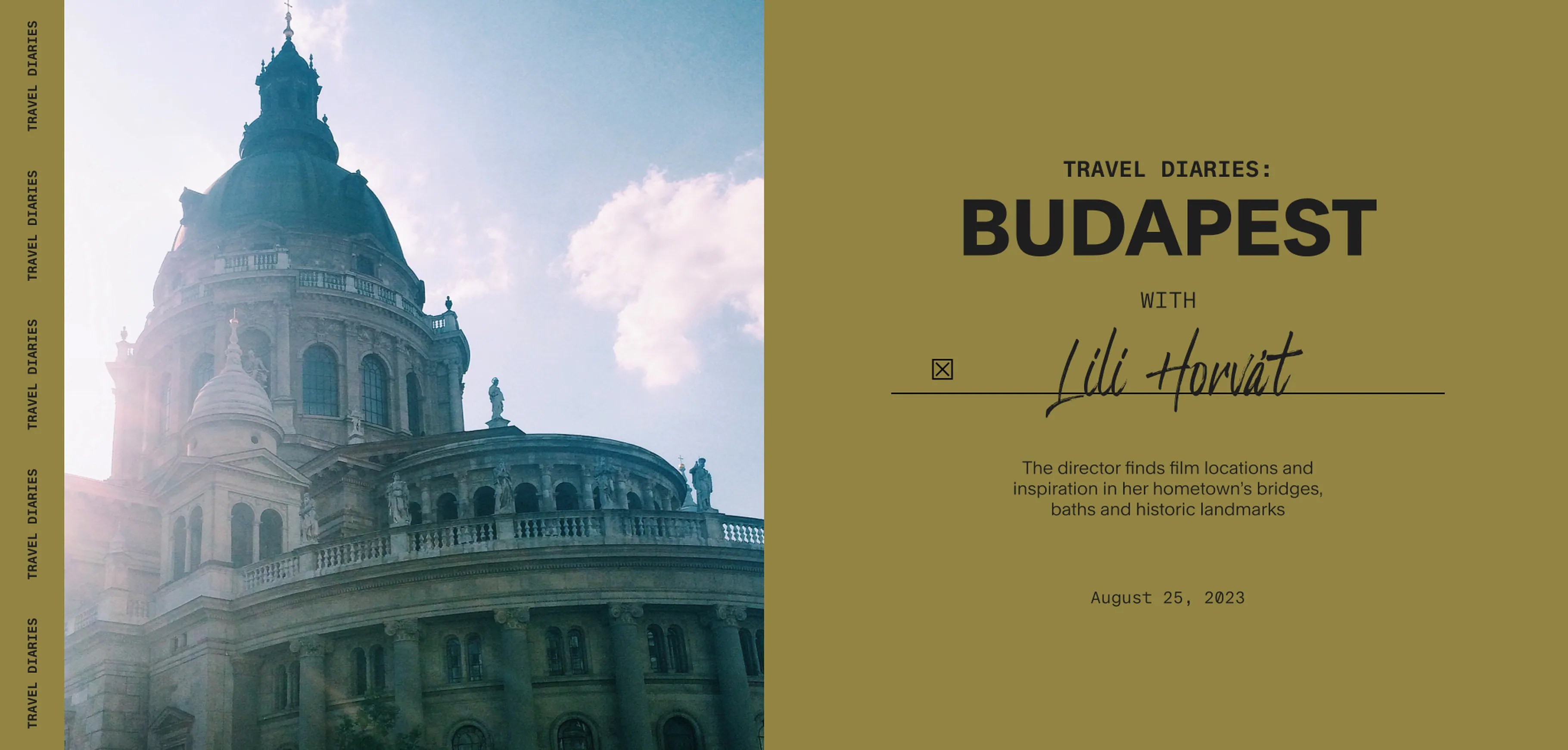
.png)
Lili Horvát
(portrait by Kriszta Falus)
Hungarian filmmaker Lili Horvát emerged with her debut feature, The Wednesday Child (2015), the story of a destitute teenage mother set in the Budapest suburbs. For her critically lauded second feature, Preparations to Be Together for an Unknown Period of Time (2020), Horvát turned her camera on the heart of Hungary’s iconic capital on the Danube River, where she grew up and still lives today. Exquisitely shot on 35mm, the film follows Márta (Natasa Stork), an accomplished neurosurgeon in America who moves back to her hometown of Budapest after encountering her soulmate, fellow Hungarian and neurosurgeon János (Viktor Bodó). But when Márta confronts him about not showing up at their arranged rendezvous on Budapest’s Liberty Bridge, a puzzled János insists they’ve never met before. Blurring the lines between reality and imagination, Preparations to Be Together for an Unknown Period of Time is a haunting tale of love and obsession that channels such classics as Alfred Hitchcock’s Vertigo (1958) and Alain Resnais’s Last Year at Marienbad (1961). Galerie spoke with Horvát about selecting the locations in her film, places that inspire her in Budapest and how history permeates every corner of the city. —Yonca Talu

LIBERTY BRIDGE

Shooting by the Liberty Bridge (photo credit: Istvan Halas)
I thought the characters of Márta and János should arrange to meet in a symbolic place, like a bridge. Budapest is a city of many bridges, which connect the two parts of town, Buda and Pest, across the Danube River. Pest is flat, vibrant and full of culture and events, while Buda is hilly, calmer and more residential. I chose the Liberty Bridge partly for its name, which we hear several times in the film. It fits in better with the story than the names of other bridges in Budapest, like the Chain Bridge, Margaret Bridge or Elisabeth Bridge. Márta and János’s meeting point is located at the Pest end of the Liberty Bridge, which is kind of a magical place. In the 19th century, there were custom houses on both ends of the bridges where you had to pay money for crossing the river. The Liberty Bridge is the only one that still has those buildings, which were demolished on other Budapest bridges after the Second World War.
Another characteristic of the Liberty Bridge is that it’s green. This was something that had an immense influence on the visual world of Preparations to Be Together for an Unknown Period of Time. When my DP, Róbert Maly, and I started to imagine the film’s look, we chose green as a dominant color in our palette because we knew that the bridge would be such an important element in the story. So everything that’s green in the film, from sets to costumes, originated from the Liberty Bridge.
Liberty Bridge
1118 Budapest, Fővám tér 1093, Hungary
PÉTERFY SÁNDOR UTCAI HOSPITAL-CLINIC
All the hospital scenes in Preparations, except for the brain surgery sequence, were shot in the Péterfy Sándor Utcai Hospital-Clinic, which is located on a rather gray and narrow street in downtown Pest. It was built in the ’30s and was one of the key locations of the 1956 Hungarian Revolution. Gatherings were held and medical supplies were distributed in this hospital. I’ve known it my entire life because I grew up a half-hour’s walk away, across from the St. Stephen’s Basilica, in a neighborhood with a very different vibe. My grandmother also spent a lot of time and passed away in the Péterfy hospital, which makes it all the more meaningful to me.
When I was developing the screenplay, I felt that Márta should sacrifice something in her professional life for János so that she experiences an even bigger blow when he tells her that he’s never seen her before. I wanted the hospital where she takes a job in Budapest to be ancient-looking and contrast with how we might imagine the U.S. hospital where she used to work. That being said, I think the Péterfy hospital is a gorgeous piece of architecture. I especially like the arcades inside the run-down but beautiful building.
Péterfy Sándor Utcai Hospital-Clinic
1076 Budapest, Péterfy Sándor u. 8-20, Hungary
peterfykh.hu
HOTEL BUDAPEST
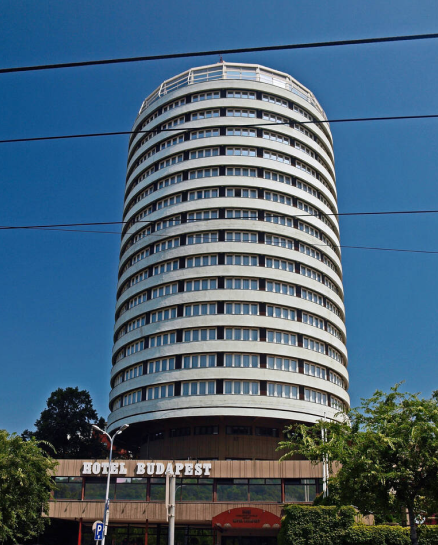
The first location we found was the Hotel Budapest, where Márta stays when she first arrives in the city. It’s a skyscraper that was built in the ’70s, during the Soviet era, and it’s round. It doesn’t seem so special today, but back then it was a sensation. When I went there, I saw its circular corridors and felt that this was the kind of imagery I was looking for. The film is very much about the labyrinthine nature of the human psyche, and I thought I could show that with a simple scene of Márta walking down the hotel corridor, which looks like an endless circle.
Hotel Budapest
1026 Budapest, Szilágyi Erzsébet fasor 47, Hungary
hotel-budapest.hu/en/
CENTRAL EUROPEAN UNIVERSITY
After settling on the Hotel Budapest, I started to look for curves in other locations, too. I chose the Central European University because of its spiral staircase. That’s where János’s book-launch event takes place. I thought setting that sequence in a modern space would help establish János as a pioneering mind. I didn’t attend the Central European University, but I would have been happy to study in a building like that. It’s an English-language university founded by George Soros after the fall of the Iron Curtain, but it was recently forced out of Hungary by the government, which is a big shame. Its campus is now located in Vienna, but the building and library where we shot are still in operation in Budapest.
Central European University
1051 Budapest, Nádor u. 9, Hungary
www.ceu.edu
THE VINTAGE HI-FI BOUTIQUE ON ÉRPATAK STREET
My father, who’s a literature professor, is a vintage hi-fi enthusiast. He happens to share that enthusiasm with the partner of my close friend, producing partner and story editor Dóra Csernátony. That’s how she and I knew of the vintage hi-fi boutique featured in Preparations, which is like a secret gathering place for hi-fi enthusiasts in Budapest. The owner runs it out of the basement of his house on Érpatak Street in Rákosmente, a suburban district near the airport. In the film, János takes Márta there, and they listen to Schubert’s ‘‘Gute Nacht’’ [‘‘Good Night’’ from the song cycle Winterreise]. Until then we’ve been in Márta’s mind and seen János from a distance. But in that scene, we actually get to spend time with him. I wanted to portray him as someone with depth, with a private world, which is why I gave him a hobby of classical music.
MÜPA BUDAPEST CONCERT HALL
My favorite place to listen to classical music in Budapest is Müpa. Although the gorgeous concert hall of the Liszt Ferenc Academy of Music, where Béla Bartók once played, is closer to my heart, I think Müpa is where the most exciting classical music concerts are happening today in Budapest. It’s a relatively new building with very good acoustics. My most defining concert experiences there, but also in general, were those of the late Zoltán Kocsis. He started out as a piano wunderkind and became one of the greatest pianists of his time. Later he began conducting and led his own orchestra in Budapest. His interpretations revealed to me the essence of certain classical music pieces; they made me understand intentions and structures in music that I previously found inaccessible. It was a privilege to see him perform live, and I have been listening to his recordings a lot lately while writing my next feature, My Notes on Mars.
Müpa Budapest
1095 Budapest, Komor Marcell u. 1, Hungary
mupa.hu/en
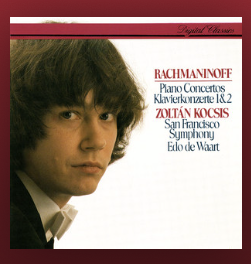
Zoltán Kocsis, Rachmaninov: Piano Concerto Nos 1 & 2
MUSEUM OF FINE ARTS, BUDAPEST
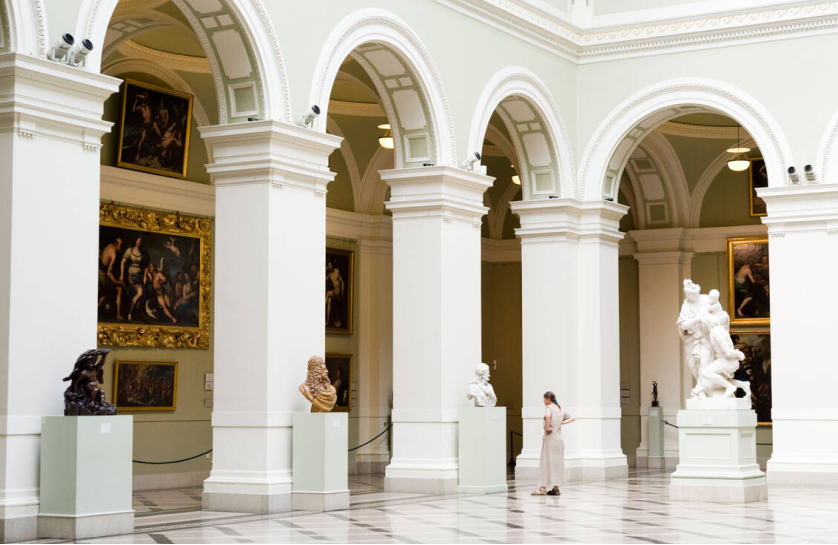
I’m a museumgoer, and if I had to pick one in Budapest, it would be the Museum of Fine Arts. It’s located on Heroes’ Square, next to the City Park, which is an area worth visiting on its own, with its ice rink that looks especially beautiful on winter afternoons. The museum has a great permanent collection of Old Master works. It usually has very exciting temporary exhibitions, too. I recently attended a small exhibition there of the Hungarian painter Judit Reigl’s work, which has had a big influence on me. She was trained in Budapest but left after the Second World War, at the start of the Communist takeover of the country, and went to Paris, where she was a member of André Breton’s circle for a while. She eventually moved from Surrealism to Lyrical Abstraction and developed a very unique style. She stayed in France until her death in 2020, but she only became well known and successful at the end of her life, when she was well over 80. As per her wish, the exhibition I saw paired her last series of drawings with her favorite pieces from the museum’s permanent collection.
Museum of Fine Arts, Budapest
1146 Budapest, Dózsa György u. 41, Hungary
www.mfab.hu
MŰVÉSZ CINEMA
I spent the first year of my studies in Paris and started my education as a filmmaker in that city’s small repertory cinemas, where I loved watching classics. Unfortunately, there aren’t any cinemas focused on old films in Budapest, but there are many art-house cinemas. My favorite one is Művész, which means ‘‘artist’’ in Hungarian. It’s situated on the Grand Boulevard in Pest. As a child, I would go there by foot, and that’s where I saw the big art-house movies of the ’90s: those of Lars von Trier, David Lynch, Quentin Tarantino, Mike Leigh and Ken Loach. What I really like about Művész is its marquee, on which film titles are displayed with an original font. When Preparations to Be Together for an Unknown Period of Time played there, it was nice to see its title on the facade. The film came out in Hungary in September 2020, between two Covid lockdowns, and when the theaters closed, it actually stayed on the marquee of Művész for an extra half a year! That was so ironic given the film’s title.
Művész Cinema
1066 Budapest, Teréz körút 30, Hungary
muveszmozi.hu/kapcsolat
“WHAT I REALLY LIKE ABOUT MŰVÉSZ
IS ITS MARQUEE,
ON WHICH FILM TITLES ARE DISPLAYED WITH
AN ORIGINAL FONT.”
THE RÓZSADOMB AREA
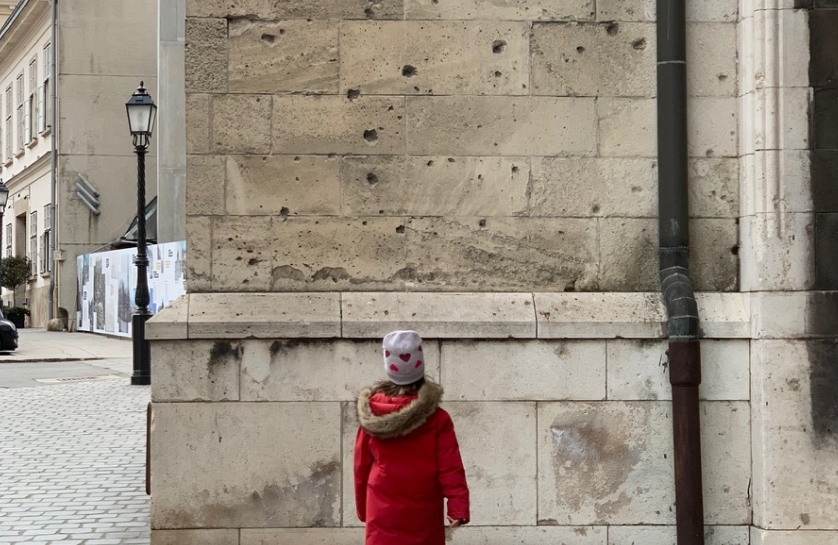
I live in the Rózsadomb [Rose Hill] area of Buda with my husband and daughter. Hungary was under Ottoman Turkish rule for 150 years, and Rózsadomb takes its name from Gül Baba [‘‘Father of Roses’’ in Turkish], a 16th-century Bektashi dervish and poet who had a beautiful rose garden on the hill. Budapest is obviously a city with history, and I grew up hearing stories about the mid-20th century from my parents. During the pandemic, a friend of mine showed my daughter, who was in first grade then, a bullet hole in our neighborhood. She got so fascinated with it and asked so many questions that I googled it and found a website on bullet holes in Budapest with pictures and directions. So we went on an expedition and discovered many bullet holes from the World War II siege of Budapest and the 1956 Revolution on the walls of our neighborhood buildings. In the end, my husband discovered a bullet hole in our own balcony!
Rózsadomb, Budapest
47°31′02″N 19°01′39″E
NAPRAFORGÓ STREET EXPERIMENTAL HOUSING ESTATE
When I’m stuck writing, I like to go for long walks in our neighborhood. Higher up from where we live in the Buda Hills, there’s a combination of nature and very interesting urban architecture, like the experimental Bauhaus housing estate on Napraforgó Street. It’s a whole street of buildings that really embody the spirit of the Bauhaus movement, which I find very inspiring, and they’re in good shape, too. It’s not a museum—people live there. But they care about and are proud of the place, so you can visit it.
Napraforgó Street Experimental Housing Estate
1021 Budapest, Napraforgó u. 17, Hungary
napraforgoutca.hu/egyesulet
HÁROM HOLLÓ KÁVÉHÁZ
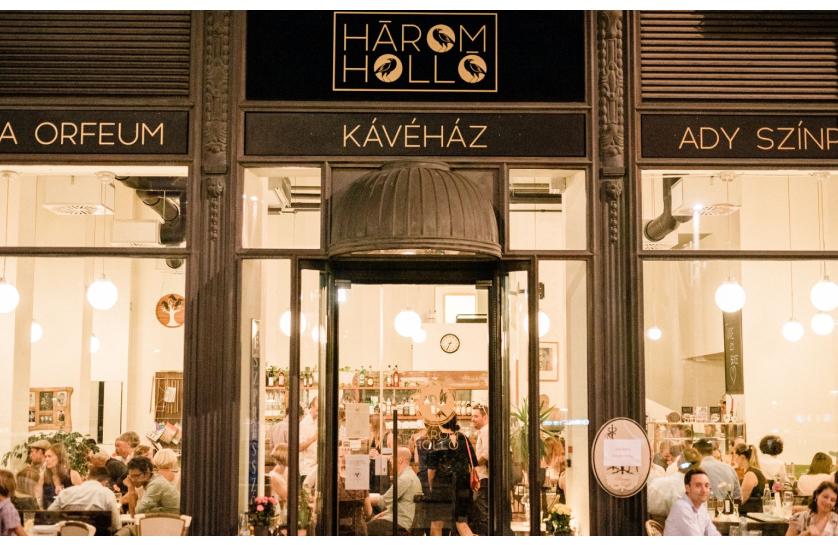
I prefer writing at home, but if I ever have to work outside, I like going to the Három Holló [“Three Ravens”] café, which was named in tribute to the great late-19th and early-20th-century Hungarian poet Endre Ady. It’s off the Elisabeth Bridge in Pest. It’s a very bright, spacious and friendly place where you can spend time working in a calm environment. It exemplifies the old Austro-Hungarian idea of how a coffeehouse should be. The owner, Wilhelm Droste, is actually German. He’s a professor of German literature and a lover of Hungarian culture. He also happens to be the husband of filmmaker Ildikó Enyedi, who’s a friend of mine and was my professor in film school, at the University of Theatre and Film Arts in Budapest.
Három Holló Kávéház
1052 Budapest, Piarista köz 1, Hungary
haromhollo.hu
THE PIARISTA KÖZ
Behind the building of the Három Holló café, there’s the Piarista köz, a beautiful passage with really magical lights that’s especially worth seeing in the afternoon. It goes through the Piarista Center, which belonged to the Catholic Church and later became a campus for the Eötvös Loránd University. My father taught there when I was a child, so I would accompany him frequently. Now the Piarista Center is back to being a Catholic property.
Piarista köz
1052 Budapest, Piarista köz 1, Hungary
47°29′33″N 19°03′08″E
CONTINENTAL HOTEL BUDAPEST
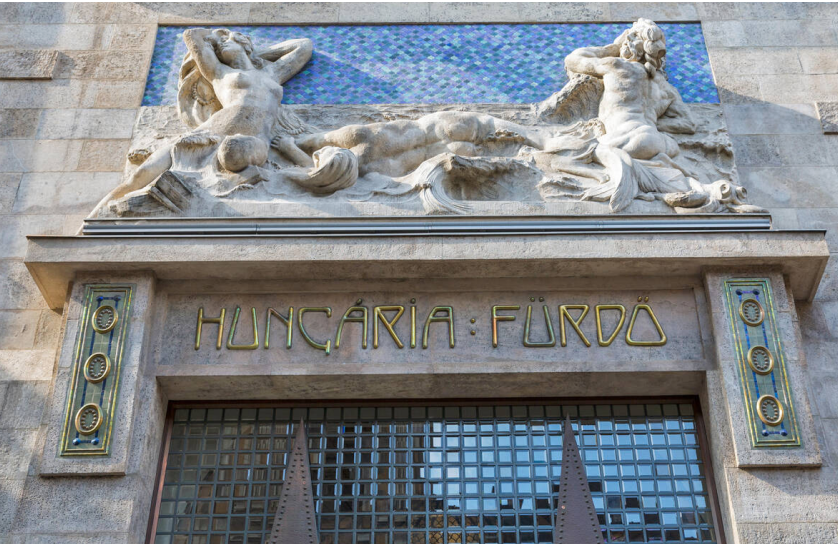
This is where my creative collaboration with Dóra Csernátony started. When I was writing Preparations, she and I would always meet at the café of the Continental Hotel Budapest. It’s a beautiful art deco–style hotel that carries many layers of history: It used to be a thermal bath, then a movie theater. It’s in the Jewish district, in downtown Pest, where I lived back then. My daughter was very small, while Dóra’s children were older, so she could move freely and would often come to my neighborhood to work on the script. It’s a very interesting area to walk around, full of pubs, bars and restaurants. The biggest synagogue in Europe, the Dohány Street Synagogue, is also there.
Continental Hotel Budapest
1074 Budapest, Dohány u. 42-44, Hungary
continentalhotelbudapest.com
LUKÁCS THERMAL BATH
Budapest has a huge thermal bath culture that goes back to the Ottoman Turkish era. I especially prefer the historic Lukács Thermal Bath, where I try to go once a week to clear my mind from work. It has indoor pools of hot thermal water and a great outdoor swimming pool next to an old sycamore tree. The opening of one of my favorite novels, Hungarian writer Géza Ottlik’s School at the Frontier [1959], takes place on the sun terrace of the Lukács Thermal Bath.
Lukács Thermal Bath
1023 Budapest, Frankel Leó út 25-29, Hungary
en.lukacsfurdo.hu
